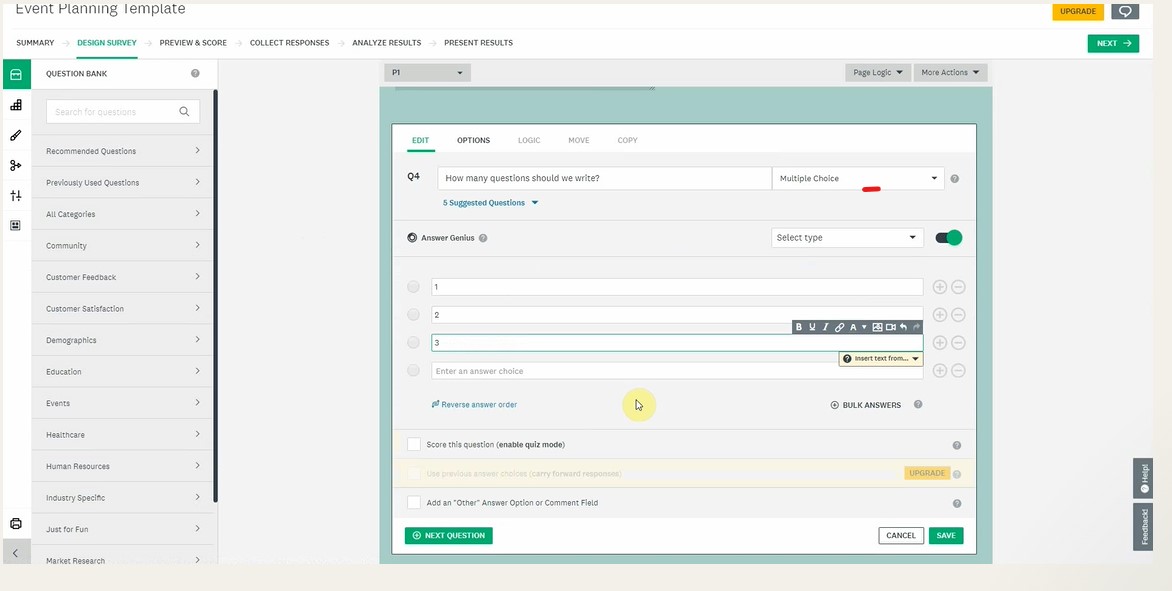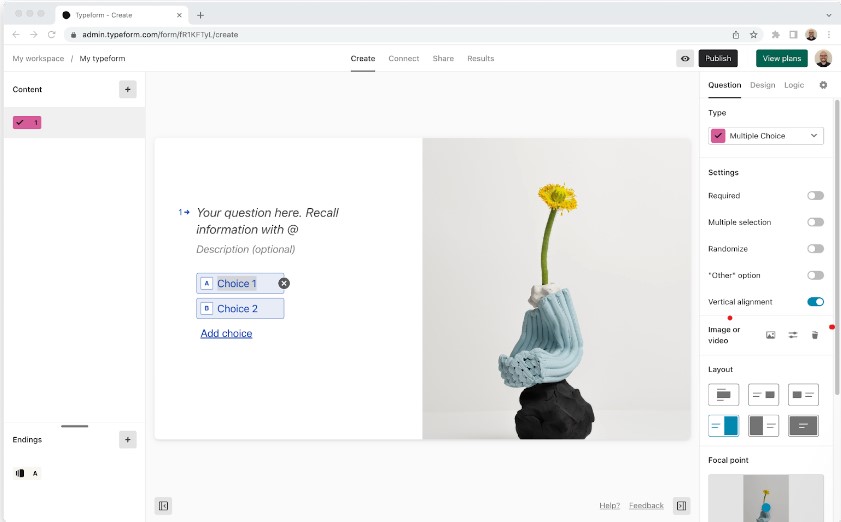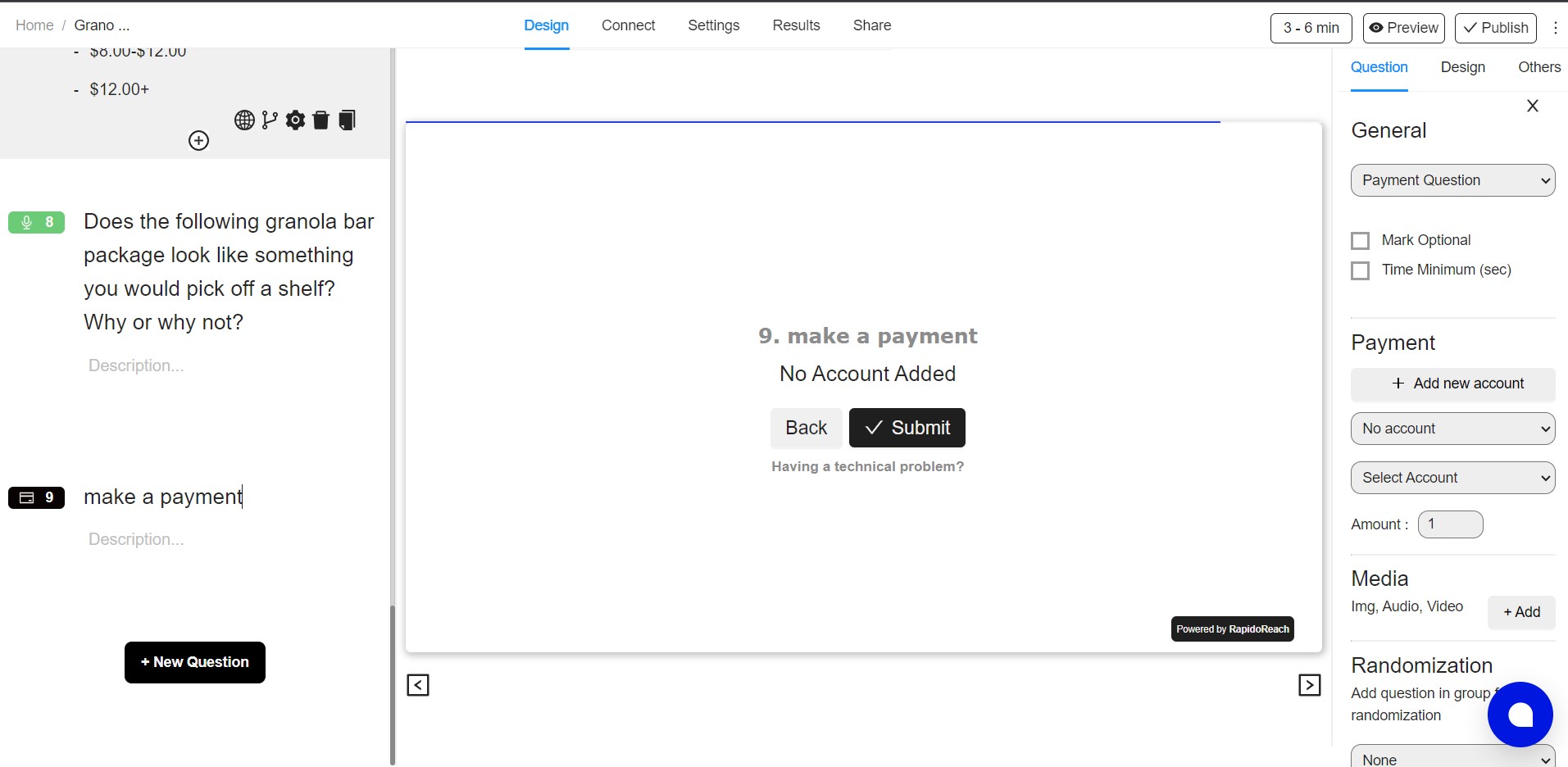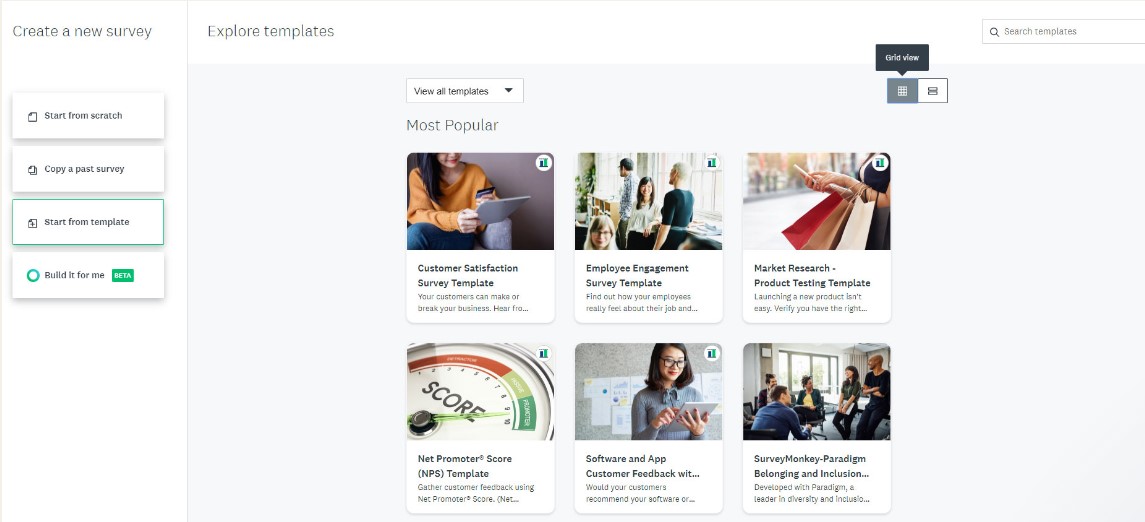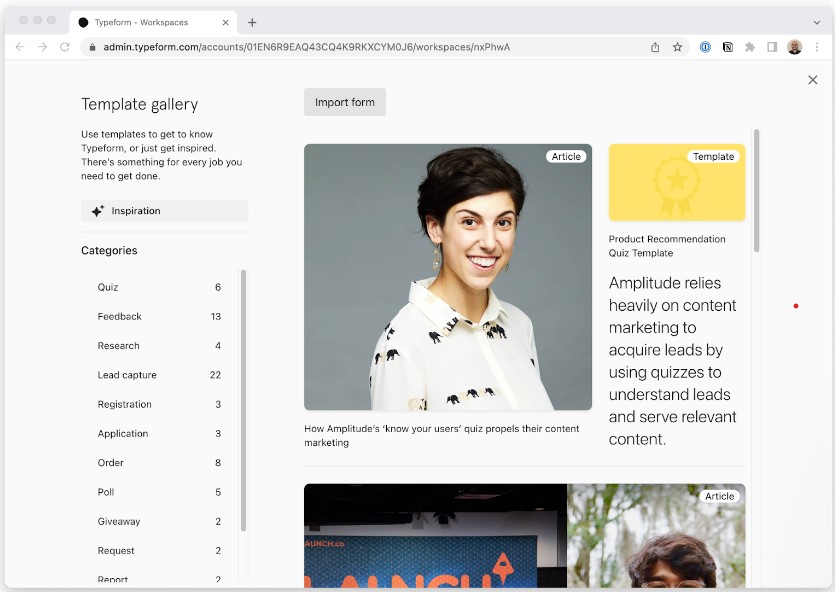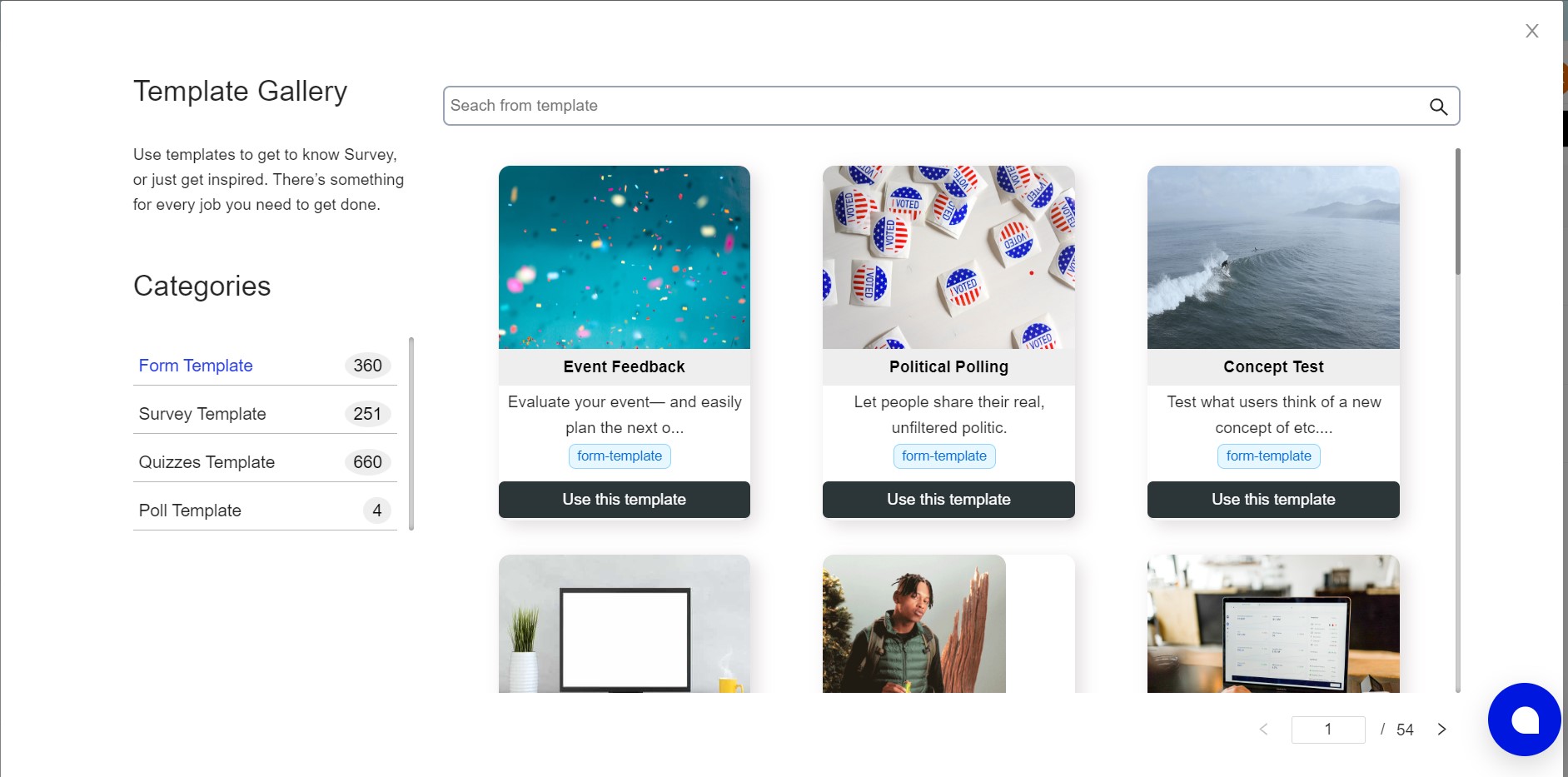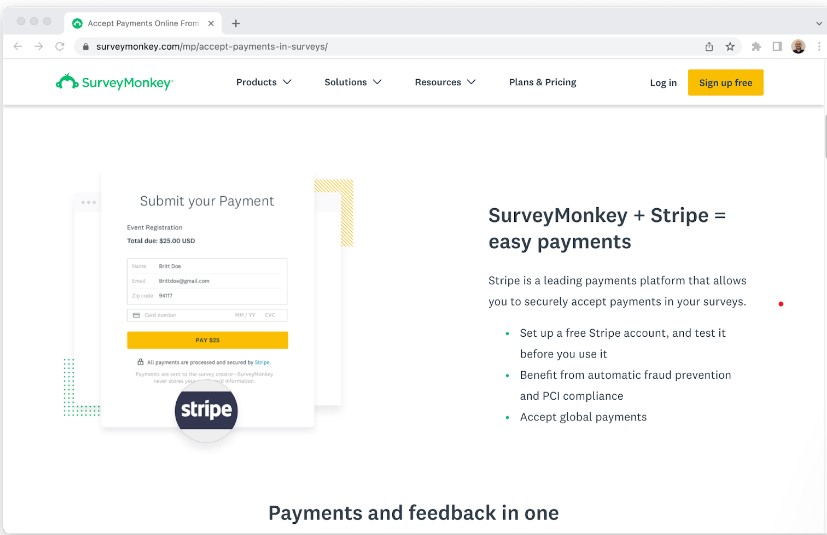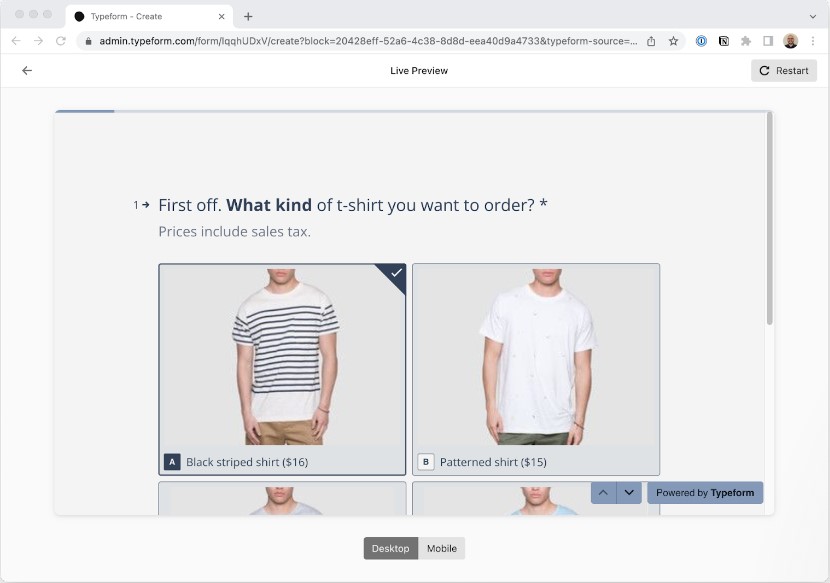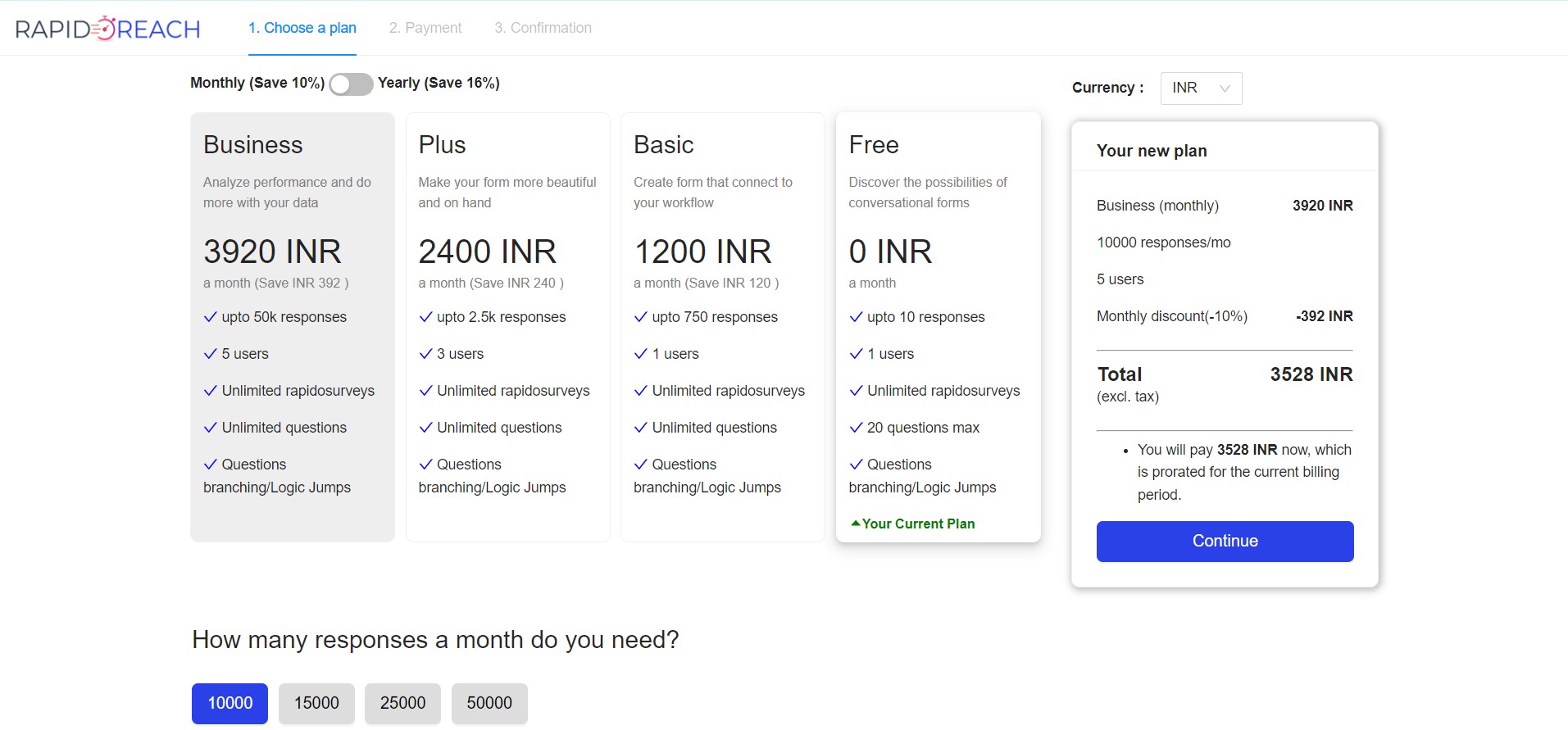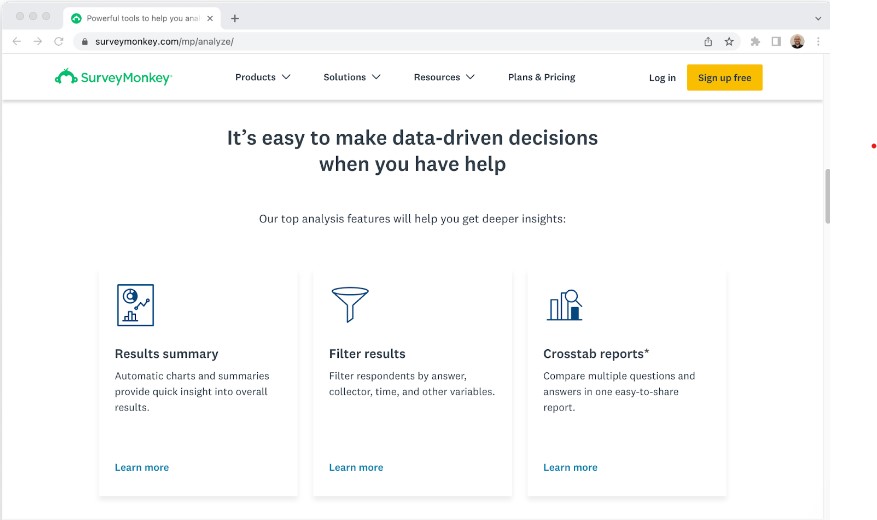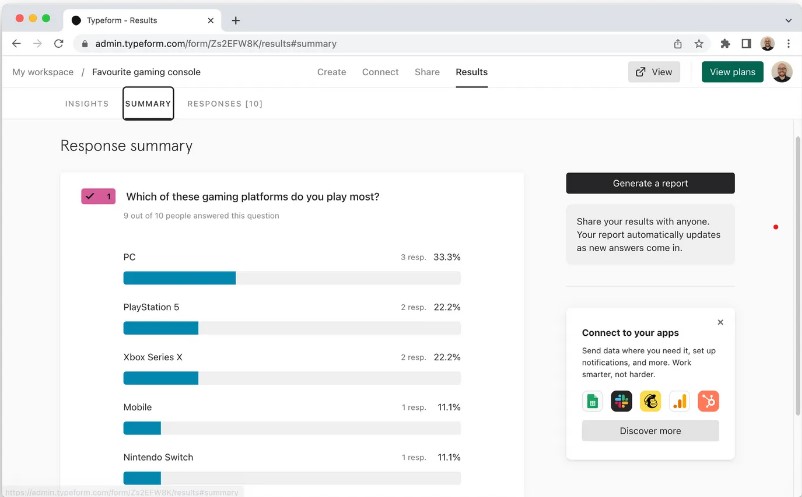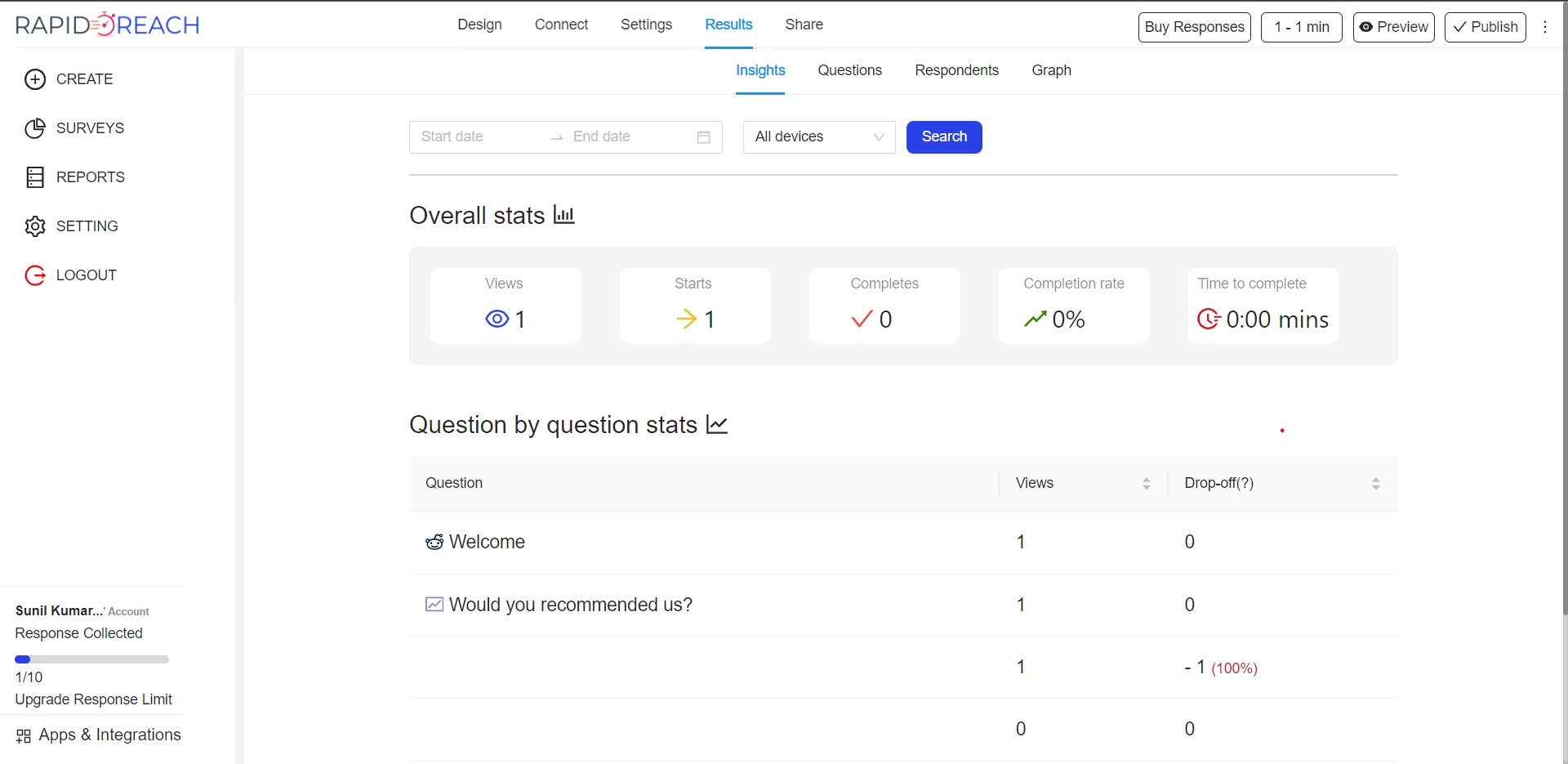In-depth Review: Typeform vs SurveyMonkey vs Rapidoform
Apart from caffeine and the ricotta concoction they put inside cannoli, the most important resource humans have is time.
Unfortunately, whether you run a global enterprise or a small business with your mates, it takes plenty of time to properly research and compare business tools.
When it comes to finding the best form builder, we want to make the process easy. That's why we've created this guide to three of the best online survey tools: Typeform, SurveyMonkey and Rapidoform.
You'll be able to weigh up the pros and cons, as well as get an idea of the features, functionality, user experiences and major differences between Typeform , SurveyMonkey and Rapidoform.
SurveyMonkey vs Typeform vs Rapidoform:
Quick Feature Comparison
| SurveyMonkey | Typeform | Rapidoform | |
|---|---|---|---|
| Best For | Creating surveys that collect comprehensive insights. | Creating surveys and questionnaires that display one question at a time. | Creating fast, versatile, and visually beautiful forms, surveys, and questionnaires of all kinds. |
| GetApp Rating | 4.7 | 4.7 | 4.9 |
| GetApp Customer Support Rating | 4.4 | 4.4 | 4.9 |
| Export Results To CSV | Yes | Yes | Yes |
Pricing
| Survey Monkey | Typeform | Rapidoform | |
|---|---|---|---|
| Free trial | No | No | Yes |
| Free version with limited features | Yes | Yes | No |
| Starting price/month (billed monthly) | $99 | $29 | $24 |
| Starting price/month (billed annually) | $32 | $35 | $20 |
Ease of use
SurveyMonkey
SurveyMonkey’s user-friendly onboarding is an excellent start to the form-building experience. But things change once you get into the form builder.
It feels like walking into a foreign city—there’s so much going on it’s difficult to know where to look.
Between multiple sidebars, a top menu and the form builder itself, getting the hang of how to do simple things like insert questions, adjust formatting and add your own styling takes a fair bit of practice.
Even once you get your bearings, the SurveyMonkey editor is just so cluttered. To add or edit a question, you need to go through multiple grey sub-menus that look like they belong in Windows ‘95 rather than a modern form builder.
While SurveyMonkey has everything you’ll need from a survey platform, the process of building those forms is confusing and somewhat dated, thanks to an overcrowded editor and poor UX.
Typeform
Typeform has become known for its distinct forms that look elegant and distinctive. It’s a shame that this elegance doesn’t entirely cross over into the form-building experience.
The editor is split into three sections: on the left, you have your content (questions), in the middle, you have a live preview of your form; and on the right, you have design and logic settings.
You pick survey questions from a vertical bar on the side of the screen. This keeps the page clear but can make it hard to keep track of important elements, especially after you add a few questions
Building a Typeform feels more like using Google Slides or Microsoft Powerpoint than it does a form builder. Whether that’s positive or negative will depend on your experience with those tools.
Overall, Typeform offers a good user experience. It’s a shame that when moving between tabs, it’s easy to get lost and that each question having its own page can make the form-building process slightly convoluted.
Rapidoform
Rapidoform is built from the ground up to be a breeze for anyone to use. Thanks to our free-text interface, building forms and landing pages is as easy as editing an online document. There’s no learning curve whatsoever— just click or type anywhere to add logos and images, embed videos, configure products and insert more than 25 question fields.
This also means your forms don’t have to be edited within the confines of sidebars and menus on the left and right of screen. Instead, you can change the settings for each individual form field in the contextual “Configure” menu that pops up when a field is selected.
While Rapidoform is not a drag-and-drop form builder, questions and form elements can still be rearranged using a simple drag-and-drop motion. Want to speed things up? You can select whole groups of elements and move them at once, or transform text with lightning-fast slash commands.
Simply type "/" in the editor to quickly create questions and insert content. There are even “Quick Questions” shortcuts—commonly used form fields with pre-configured details—to make the process even more intuitive.
Customisable Templates
SurveyMonkey
Like Typeform, SurveyMonkey boasts a collection of over 100 templates. They are categorised by industry type and what kind of metrics you’re looking to collect, and are easy to sort through.
SurveyMonkey’s templates don’t reinvent the wheel when it comes to design. Where Typeform and Rapidoform show off different customisations and use cases, SurveyMonkey’s templates are very functional in their design.
While lacking in aesthetics, the templates are useful as a tool to help you with your questions. They come with questions tailored for particular uses, so if you’re looking to undertake market research or an NPS survey, you can get ideas from the templates themselves.
One handy feature you won’t find elsewhere is the ability to preview sample results alongside a preview of your template. This gives you an idea of the kind of insights you could collect from the survey responses and is an opportunity for you to see how it’s displayed on the back end.
Typeform
Typeform has a collection of over 100 survey templates, covering everything from product feedback surveys to photography booking forms. Each template has been curated to look great and be ready for you to use straight away.
If you want to build something unique or use a template as inspiration, you can easily adjust the design, add or remove questions and adapt it to your goals.
Templates are also accompanied by descriptions, so if you don't quite know what you need, you can see what they can be used for.
Recently Typeform has also included featured templates that other companies recommend. It’s a nice touch and gives you some context as to what each template may be useful for.
Each template shows you how many questions are included, the estimated time it will take to complete and whether it uses paid features.
This last feature is handy as it lets users on the free version know upfront if they'll need to upgrade to a premium plan, rather than stringing them along so they feel forced into paying.
Rapidoform
Rapidoform's template library showcases the staggering versatility of the platform. Need to take payments? You can do it. Want to send out digital wedding invitations? Sure. Going to start your own online bakery business? Why not.
Rapidoform offers a second-largest library of form templates, with 500+ unique pages to choose from. The templates cover most types of forms and use-cases, and unlike JotForm and Wufoo, they all have custom designs, making it simpler to create a beautiful form, fast.
Templates are sorted by category and industry, and available to copy with the click of a button. The library is updated weekly with new forms. Each is optimized for a specific use case and accompanied by a short guide to help you along the way.
Like SurveyMonkey, Rapidoform’s templates are pre-filled with relevant questions, so you can get an idea of what questions you should be asking. This drastically cuts down the time you’ll spend building forms
Payment support
SurveyMonkey
Payment isn’t available on SurveyMonkey’s Standard Annual plan. You’ll have to be subscribed to Advantage Annual for $32/month to unlock the functionality.
Like Typeform, you can only use Stripe to accept payments with SurveyMonkey. Once you add your Stripe account, you can insert a payment page to your survey and set a fixed price, or give your respondents pricing options to choose from.
SurveyMonkey’s payment option is suitable for non-profit or charity donations, or fundraising. It isn’t quite full-featured enough to use for a simple online storefront—it doesn’t include the basic receipt and invoice generation you’d need to get started.
Typeform
We’ve covered how restrictive Typeform’s free plan is, so it’ll be no surprise that you’ll have to sign up to Basic ($29/month) to unlock payments. This unlocks the ability to sell products, take bookings, or accept donations.
Fittingly, Typeform’s payments are also “basic”. It processes all payments through Stripe.
Millions of businesses use Stripe as a secure way to take credit card payments, but it would be nice to at least have the option to use another payment tool like PayPal or Square.
Rapidoform
Unlike Typeform and SurveyMonkey, Rapidoform doesn’t limit you to one provider. You can make the best choice for your business and customers, with support for major payment gateways like PayPal Business, Stripe, Square, and even Google Pay.
But Rapidoform goes beyond accepting payments. With custom pricing rules you can automate the calculation of shipping costs, add discounts and coupons for your store, and charge tax.
Millions of businesses use Stripe as a secure way to take credit card payments, but it would be nice to at least have the option to use another payment tool like PayPal or Square.
Alongside these features, you can also accept subscriptions and generate receipts and invoices to keep your business organized and compliant. There are also simple order management tools so you can manage inventory and fulfilment.
Payments are available as part of the $24/month Essentials plan. Rapidoform also doesn’t take any percentage of payments or fees, meaning your profits stay in your pocket.
Form analytics
SurveyMonkey
Compared to Typeform, SurveyMonkey is a more powerful tool for data collection and analysis. Honestly, it has the most advanced analytics features on the market.
In the Analyze section of your survey, you can view a summary of your data, browse individual responses, create and export dynamic charts and download your results to multiple formats.
Data is presented in clear, easy-to-understand graphics. You can even customize the way it looks to create graphics or charts to share on social media.
The rules feature also lets you focus on specific information. For example, if you are running a poll on ‘Best Milkshake Flavours’ and want to see what women answered, you can do so. It’s a great feature to better understand different audience segments.
Typeform
Typeform lets you collect insights, analyze data and review your submissions with built-in data analysis features and more than 23 integrations with tools like Facebook pixel ID and Google Tag Manager.
From the back end you can see who has viewed and submitted to your form, as well as the completion rate. You can also see the average completion time, collect data for each question and see where people dropped off so you can make improvements.
It doesn’t allow you to track partial submissions or view sales figures, but you can supplement these features with Zapier integrations like Qualtrics or Enhencer, and unlock even more data.
Rapidoform
With Rapidoform Analytics, you can analyze responses to learn from customer behaviour, boost conversions and improve your response rate—all from within the dashboard.
Rapidoform keeps the form analytics experience in-house. You can see important data like form views, incomplete submissions and completion rates, as well as the number of sales and the questions causing respondents to drop off.
Prefer to use your existing tools? Rapidoform offers integrations with analysis apps like Google Analytics and Facebook Pixel, or you can use Zapier and Integromat to connect your forms to other tools and dive deeper into the numbers.
If you need to get your form data elsewhere, Rapidoform lets you choose to export all responses and submission data wherever you please. That way you can get your data where you want it, all without touching a line of code. The verdict: which is the best form builder for you?
Try Rapidoform Free Now?
